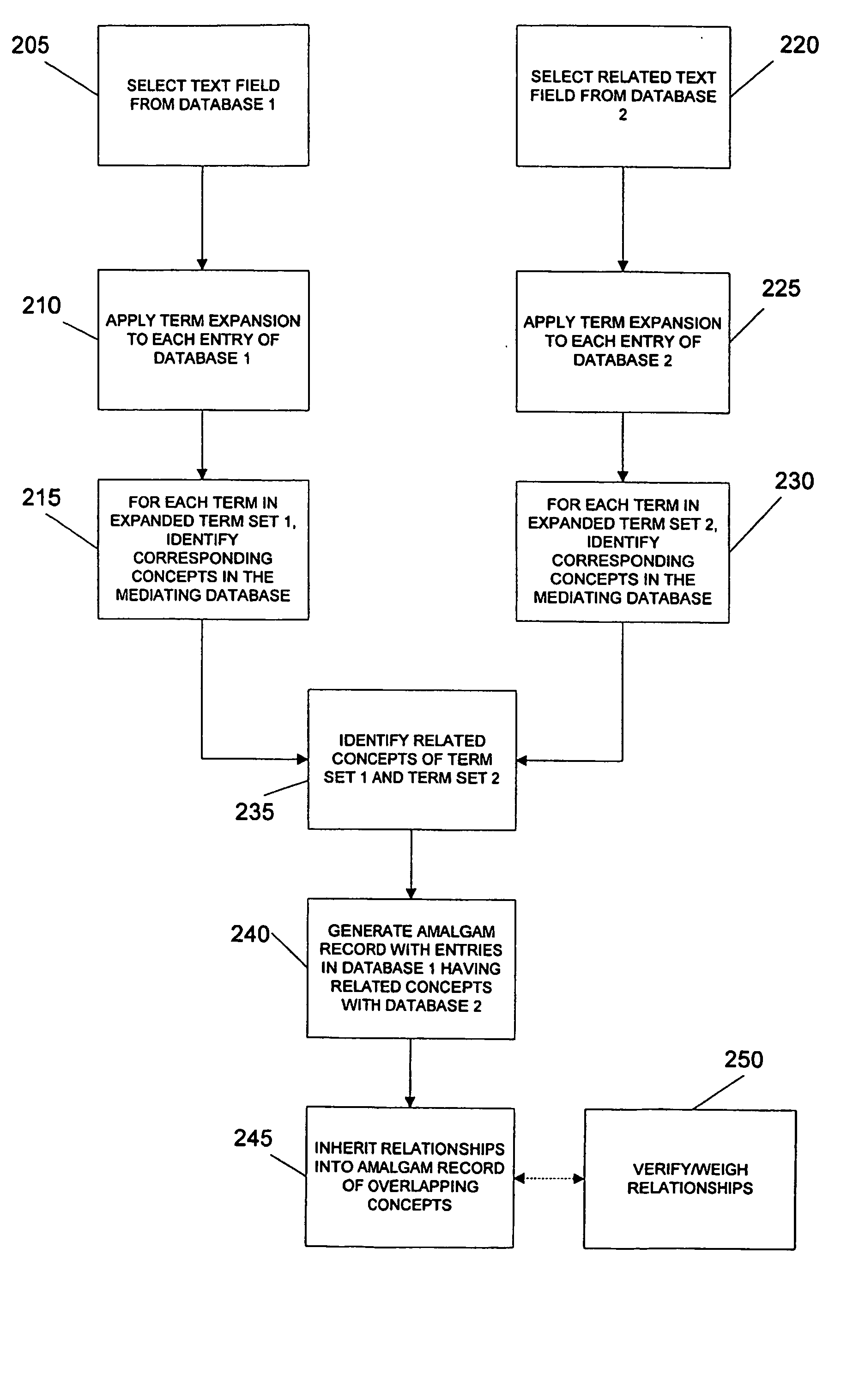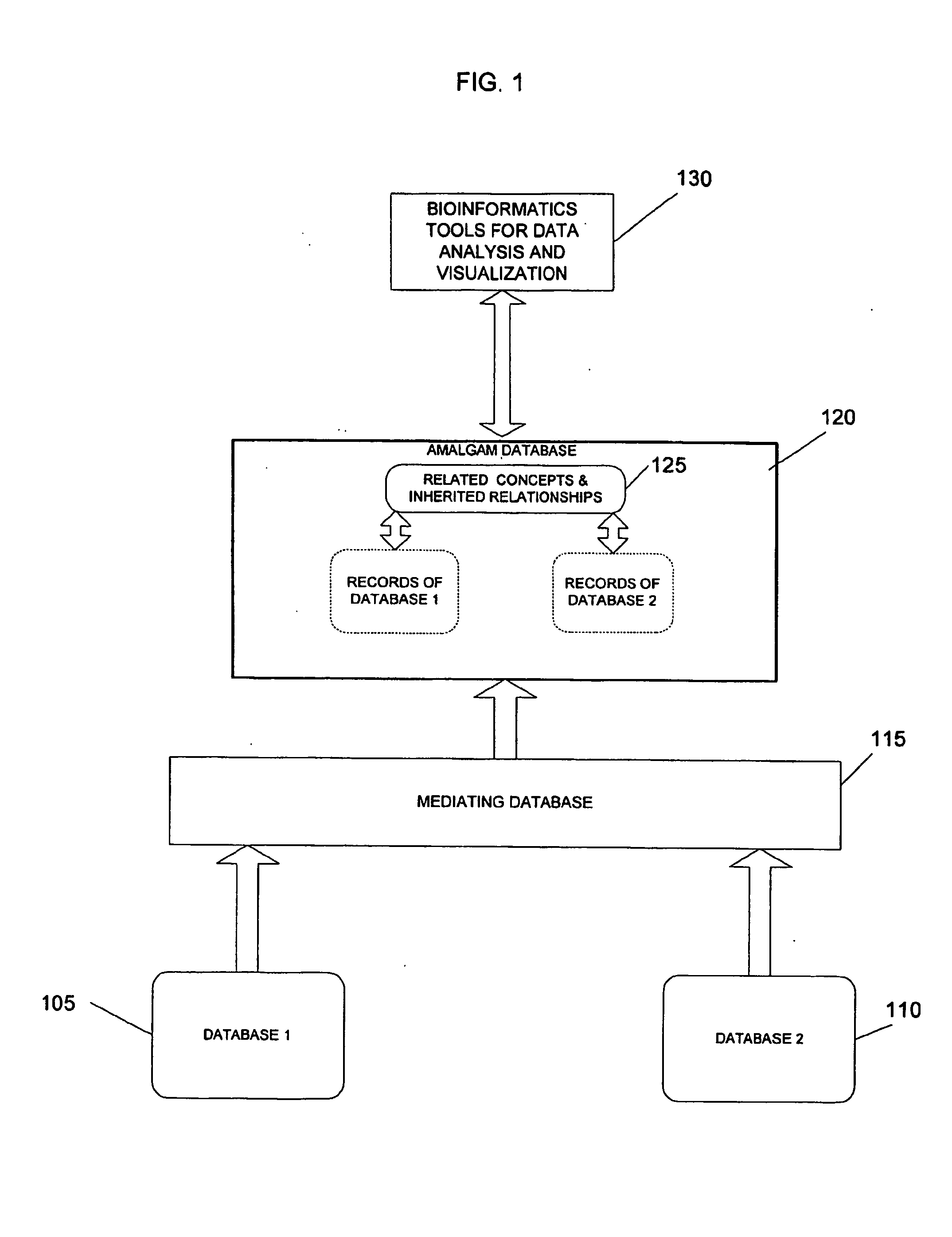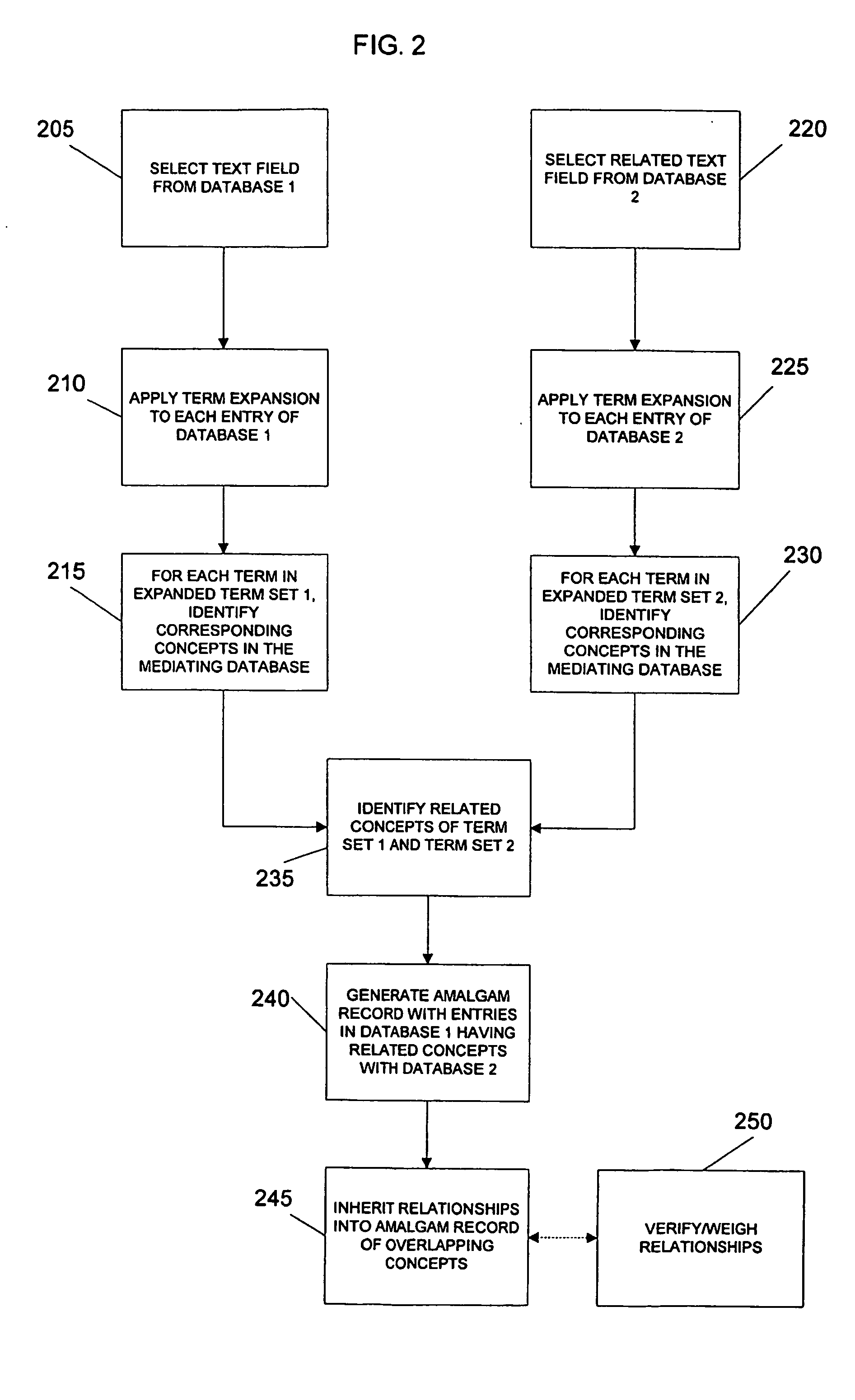Terminological mapping
a technology of terminological mapping and mapping phenotypes, applied in the field of terminological mapping, can solve the problems of complex data that requires novel methods of analysis, requires more complicated, and remains difficult to precisely specify observed phenotypes and compare them to related phenotypes of other organisms, so as to improve the interoperability of phenotypic databases and clarify problems
- Summary
- Abstract
- Description
- Claims
- Application Information
AI Technical Summary
Benefits of technology
Problems solved by technology
Method used
Image
Examples
example
Terminological Mapping
[0089] An automated multi-strategy mapping method for high throughput combination and analysis of phenotypic data deriving from heterogeneous databases with high accuracy has been developed. The method includes a mapping strategy that provides for the assessment of the qualitative discrepancies of phenotypic information between an anthropocentric clinical terminology and a non-human animal phenotypic terminology.
[0090] The method made use of Phenoslim, SNOMED and UMLS. Phenoslim is a particular subset of the phenotype vocabularies developed by Mouse Genome Database (MGD) that is used by the allele and phenotype interface of MGD as a phenotypic query mechanism over the indexed genetic, genomic and biological data of the mouse. The 2003 version of PS containing 100 distinct concepts was used in the current study.
[0091] SNOMED CT terminology (version 2003) is a comprehensive clinical ontology that contains about 344,549 distinct concepts and 913,697 description...
PUM
 Login to View More
Login to View More Abstract
Description
Claims
Application Information
 Login to View More
Login to View More - R&D
- Intellectual Property
- Life Sciences
- Materials
- Tech Scout
- Unparalleled Data Quality
- Higher Quality Content
- 60% Fewer Hallucinations
Browse by: Latest US Patents, China's latest patents, Technical Efficacy Thesaurus, Application Domain, Technology Topic, Popular Technical Reports.
© 2025 PatSnap. All rights reserved.Legal|Privacy policy|Modern Slavery Act Transparency Statement|Sitemap|About US| Contact US: help@patsnap.com



